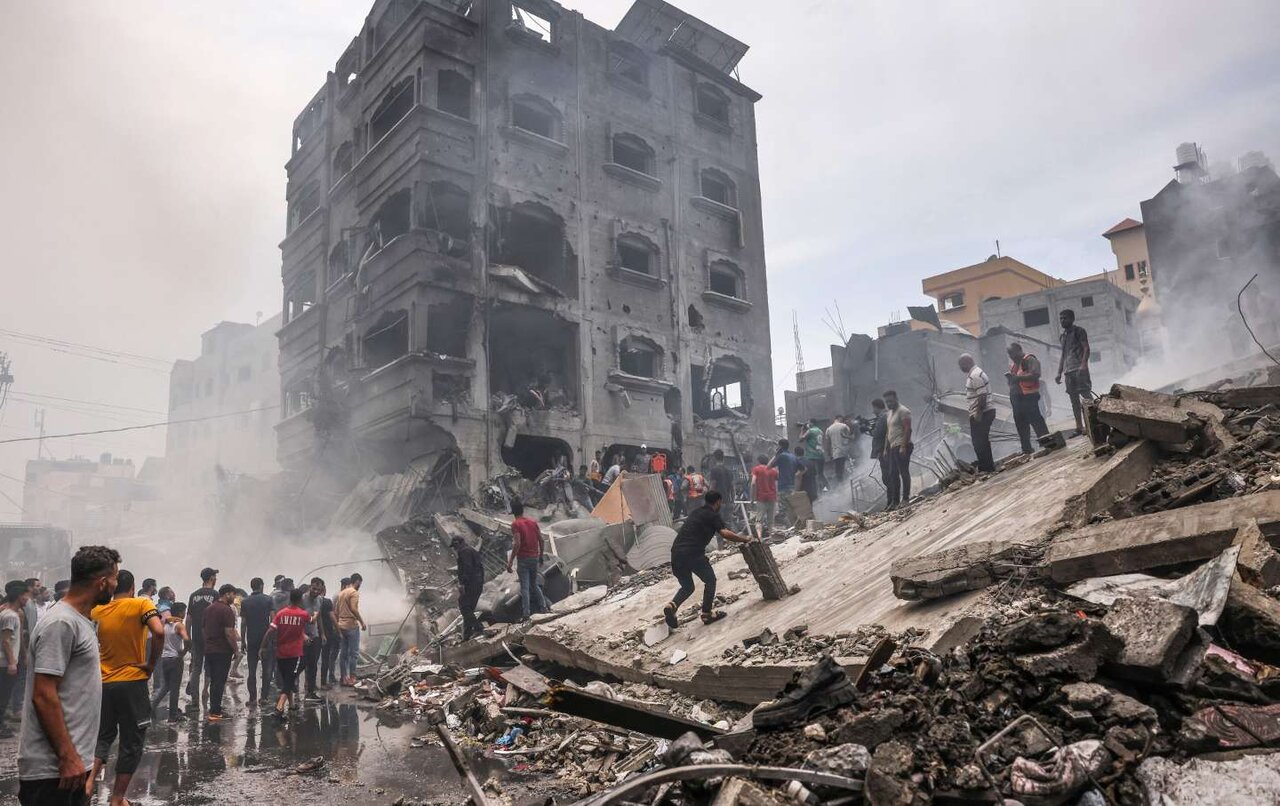Rafah braces for Israeli invasion
Palestinians fear the worst with nowhere to go

TEHRAN-Reports indicate Israeli officials, including Prime Minister Benjamin Netanyahu, have told Western diplomats that the regime will press ahead with a military invasion of Rafah.
The southernmost city of the blockaded Gaza Strip is the last place of refuge for more than 1.4 million Palestinians, many of whom have already been forcibly displaced multiple times.
Tel Aviv has banned international reporters from entering the enclave, which critics say is an attempt to prevent more footage from being publicized on the scale of destruction in the territory.
The United Nations and other organizations are warning repeatedly and even more loudly against a military offensive in Rafah, saying there is no other place in Gaza where the displaced can go.
There are no homes left for Palestinians to return to, according to UNICEF spokesperson Tess Ingram who returned from the Gaza Strip last week and described the level of destruction that she witnessed across the enclave as “shocking”.
Ingram is one of the few external humanitarian workers who was able to travel to the northern Gaza Strip as well, despite her convoy being hit by live ammunition.
Speaking to LBC, she questions how people will be able to return to their homes when there is nothing left.
“As you drive through (the Gaza Strip), the first thing you see is the destruction.. and the sheer scale of how much has been damaged or completely reduced to rubble is shocking.” Ingram says.
“There is not a lot left.”
On her concern about a military offensive into Rafah, Ingram says the situation is already dire, with nowhere near enough aid getting through, even in the south, let alone the north.
“In Rafah, the people are all terrified. They hear the news of an offensive in Rafah, and some of the people I met have already moved six or seven times over the past six months,” Ingram pointed out.
“(Those seeking shelter in Rafah) don’t want to be displaced again. They don’t know where they would go. They are aware of the level of destruction north of them,” the UNICEF official added.
Asked about the destruction in Gaza, Ingram said it would take billions of dollars and many years to rebuild the Palestinian territory.
In Khan Younis, she says there is also a similar level of intense destruction as she witnessed in the north.
“Eight out of ten schools in Gaza are either damaged or destroyed. (Schools in Gaza are used to shelter the displaced). It’s not just homes that have been destroyed, schools, hospitals, markets, offices, its everything.”
And she recalls “one of the things I was thinking about as I was driving through (the enclave) this could very easily be my home town in Australia, it’s all the things we have in our community, cinemas, shops… (now) rubble and people just standing in the black and dirt around it.”
It is a first-hand account of a Western aid official who paints a very dark and disturbing picture of a possible Israeli ground offensive in Rafah and what that would mean for the hundreds of thousands of Palestinians seeking shelter there.
But it is also the type of first-hand witness account that the Israeli authorities do not want the world to hear from, which many analysts have said explains why international reporters have been prevented from entering the territory.
The work of a war reporter is to dig deeper and go to other places throughout the Gaza Strip.
This is particularly true for the areas where the Israeli occupation forces have ordered Palestinians to travel, and when they arrive, they become the next target of Israeli warplanes and tanks.
The reality is that there are no safe areas in the Gaza Strip. Footage of the enclave razed to the ground by Israeli airstrikes, tank shells and artillery fire has been broadcast.
Rafah itself has been bombed on a regular basis, despite the Israeli occupation forces ordering Palestinians to travel there.
Now the Israeli military wants to invade the city, most likely in a similar fashion to storming other major cities, where leaflets are dropped, the Palestinians are told where to go – most likely across the coast – then the Gaza coast will be the target of Israeli airstrikes.
Another disturbing element is that many Palestinians sheltering in Rafah are elderly, injured, or extremely malnourished to move anywhere.
Many will have no other option but to stay put and that will undoubtedly result in many more massacres, raising an already disturbing civilian death toll and casualty rate.
Leave a Comment